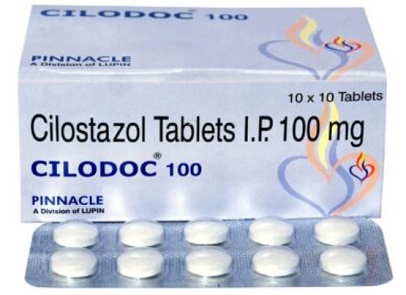Nikhil Prasad Fact checked by:Thailand Medical News Team Jun 08, 2024 1 year, 7 months, 2 hours, 35 minutes ago
Med News: Understanding Nonalcoholic Fatty Liver Disease
Nonalcoholic fatty liver disease (NAFLD) is a common chronic liver condition that affects millions worldwide. This disease begins with the accumulation of fat in the liver and is often linked to metabolic syndrome, which includes obesity, diabetes, high blood pressure, and high cholesterol. Recently, the term NAFLD has been replaced with Metabolic Dysfunction-Associated Steatotic Liver Disease (MASLD) to better reflect its association with metabolic issues.
 Cilostazol: A New Hope for Fatty Liver Disease
The Problem with NAFLD
Cilostazol: A New Hope for Fatty Liver Disease
The Problem with NAFLD
Despite its prevalence, many people with NAFLD show no symptoms until the disease has progressed to advanced stages, which can lead to irreversible liver damage. NAFLD is not only a liver issue but also increases the risk of heart disease and certain cancers. The disease imposes a significant economic and healthcare burden globally.
Cilostazol: A Promising Treatment
Researchers have been exploring various treatments for NAFLD, and one promising candidate is Cilostazol, a drug typically used to improve blood flow in people with intermittent claudication, a condition caused by narrowed arteries. Cilostazol is known for its ability to reduce triglycerides and increase high-density lipoprotein (HDL) cholesterol, which could benefit people with NAFLD.
The Study
A recent study by researchers from Guangdong Pharmaceutical University-China that is covered in this
Med News report investigated the effects of Cilostazol on mice with diet-induced NAFLD. The researchers divided the mice into several groups, including a control group and different dosage groups for Cilostazol. Over 12 weeks, the mice were monitored for changes in body weight, liver function, and lipid levels.
Key Findings
-Weight Reduction: Cilostazol significantly reduced the body weight of mice on a high-fat diet, suggesting its potential to help manage obesity-related liver conditions.
-Improved Liver Function: The drug improved liver function markers and reduced liver weight and fat accumulation, indicating its effectiveness in reducing liver fat.
-Lipid and Glucose Metabolism: Cilostazol improved lipid profiles by lowering triglycerides, total cholesterol, and LDL cholesterol while increasing HDL cholesterol. It also helped regulate blood glucose levels and improved insulin sensitivity.
-Inflammation Reduction: The treatment reduced levels of inflammatory markers in the liver, which is crucial since inflammation plays a significant role in the progression of NAFLD.
-Intestinal Health: Cilostazol positively affected the gut microbiota, increasing the diversity of beneficial bacteria and reducing harmful ones. This change in gut flora helped improve the intestin
al barrier, preventing harmful substances from reaching the liver and causing damage.
Mechanism of Action
The study revealed that Cilostazol works by activating the AMPK-ACC1/SCD1 and AMPK-PGC1α-G6P/PEPCK pathways, which are involved in lipid synthesis and gluconeogenesis (the production of glucose from non-carbohydrate sources). By activating these pathways, Cilostazol reduces liver fat production and improves overall lipid metabolism.
Implications for Human Health
While these findings are promising, further research is needed to confirm the effects of Cilostazol in humans. If similar results are observed, Cilostazol could become a valuable treatment option for managing NAFLD and its associated metabolic disorders.
Conclusion
Cilostazol shows great potential in treating NAFLD by improving lipid and glucose metabolism, reducing inflammation, and enhancing gut health. This drug could offer new hope for patients struggling with this common yet serious liver condition. As research progresses, we may soon have an effective treatment to combat the global burden of NAFLD.
The study findings were published in the peer reviewed International Journal of Molecular Sciences.
https://www.mdpi.com/1422-0067/25/11/6280
For the latest
Med News, keep on logging to Thailand Medical News.
Read Also:
https://www.thailandmedical.news/news/fructose-sweeteners-university-of-california-study-shows-that-excessive-fructose-intake-may-cause-leaky-gut-which-in-turn-leads-to-fatty-liver-disease
https://www.thailandmedical.news/news/fatty-liver-disease-increases-risk-of-covid-19-hospitalization-but-majority-do-not-even-know-they-have-fatty-liver-disease
https://www.thailandmedical.news/news/breaking-sars-cov-2-infection-induces-increase-of-gp73-that-causes-dysglycaemia-increased-gp73-could-also-imply-future-liver-disease-and-liver-cancer
